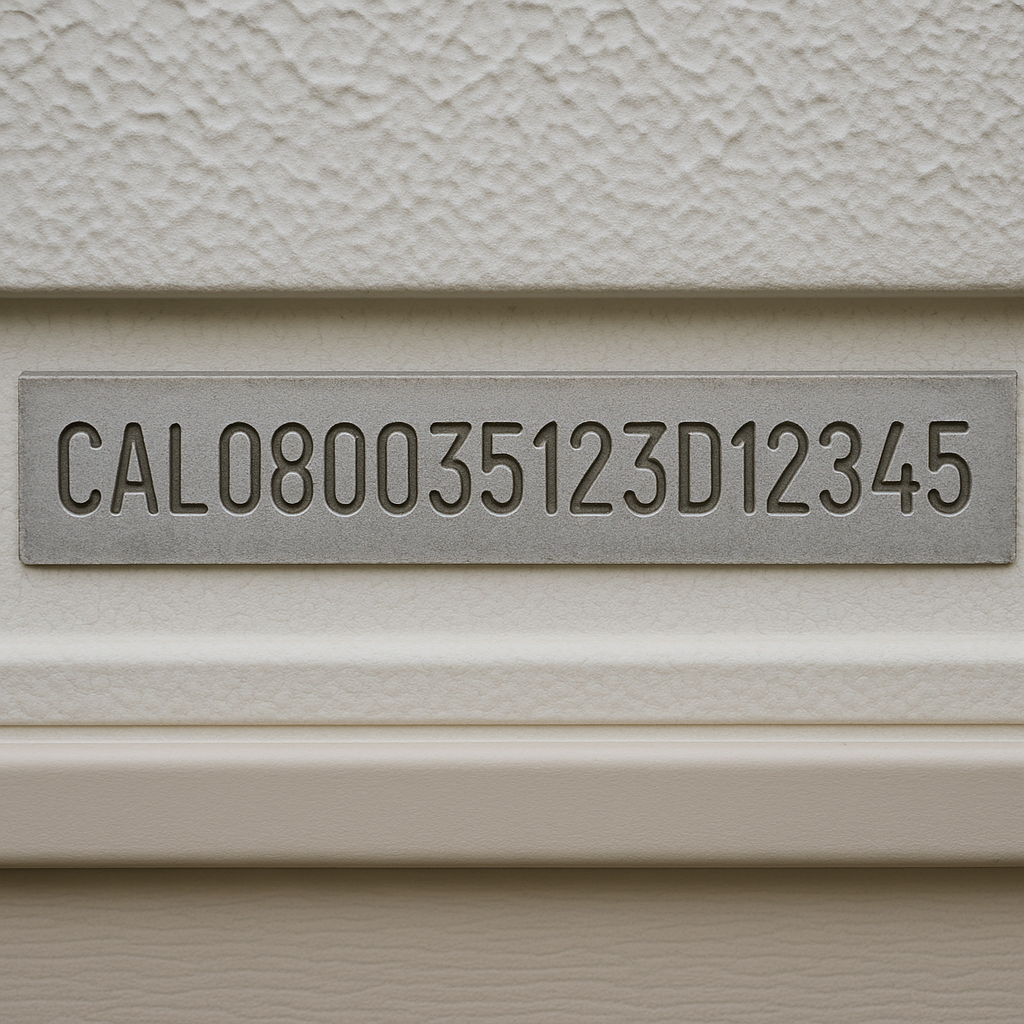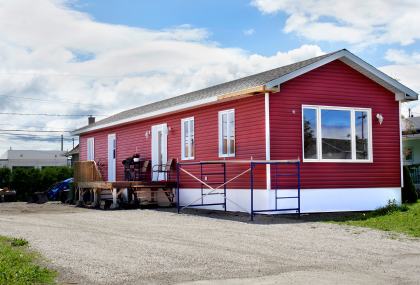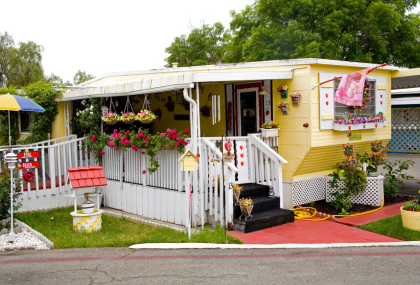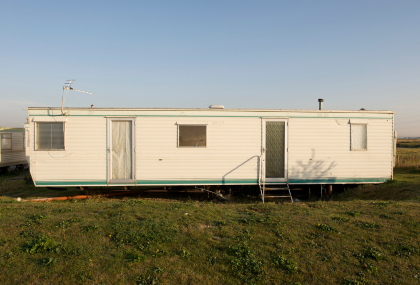
Understanding the Structure and Format of Mobile Home VIN Numbers
VINs, or vehicle Identification Numbers, are important for finding and learning more about a mobile home. These unique identities are made up of characters that tell you important things about the make, model, and year that the mobile home was built.

A mobile home VIN is 17 characters long, the same number of characters used in car VINs. It contains important information like the manufacturer’s code, which tells you which company built the home. Additionally, it has a part that lists the mobile home’s size and type, which lets you know whether it’s a single-wide or double-wide unit.
The format also includes a serial number that gives each mobile home a unique name. This makes it easy to track and report on them. By decoding these elements, real estate agents can learn much about evaluating and valuing mobile homes properly.
Key Features and Components of a Mobile Home Vin Number Explained
A mobile home’s Vehicle Identification Number (VIN) is essential for finding and knowing specifics about a manufactured home, which gives you crucial real estate information. This unique 17-character code is a mix of letters and numbers that tells you important things about the mobile home, like who made it, the model year, and where it was made.
The World Manufacturer Identifier (WMI), which consists of the first three characters of the VIN, tells you exactly which company made the car. The fourth through eighth characters give details like body type and size.
The ninth character is a security check number that ensures the VIN is correct. The tenth character shows the model year, which is important for determining age-related factors in home ratings.
Finally, the eleventh character names the plant where the mobile home was made, which adds another layer to the story of how it came to be. Knowing what each part of a mobile home’s VIN number means is important for accurate appraisals and assessments in real estate transactions involving manufactured homes. This lets people make smart choices about value and follow housing rules.
How to Locate the VIN Number on Your Mobile Home
To find your mobile home’s VIN, start by looking at the outside. A metal plate or sticker is usually located near the front door, hitch, or on the frame itself. The 17-character VIN is a unique identifier that tells you a lot about the past and specifications of the mobile home.

You can also find this important information by looking inside cabinets or closets, as makers sometimes hide VIN numbers in places that aren’t as obvious to keep them from getting damaged by the weather. Make sure you look at all the papers that come with the mobile home, like the title or registration papers, because the VIN is usually written in a big way.
Real estate experts who want to learn more about a mobile home’s history, model year, and manufacturer must know where to look for this unique identifier and how to read it. If you know how to spot and use VIN numbers correctly, you can make better decisions about real estate transactions and prices.
Importance of a Mobile Home VIN Number in Property Transactions
The Vehicle Identification Number (VIN) is very important when buying or selling mobile homes because it is a unique number that can be used to identify each unit. This alphanumeric number is significant for making sure that a mobile home is real and has a history, just like a VIN is for cars.
Real estate agents can learn a lot about a mobile home by knowing its VIN, such as its manufacturer, model year, and specs. Knowing the VIN is also a big part of checking ownership records to ensure the property doesn’t have any open liens or legal problems.
When doing business, correctly identifying and understanding the VIN can help stop fraud and other problems by making sure that all the paperwork fits the mobile home’s physical features. In addition, many states have rules that say correct VIN information is needed for title transfers and registration. This makes it essential to any sale or purchase agreement involving a manufactured home.
Decoding the First Section of a Mobile Home VIN Number: Manufacturer Identification
Mobile home VIN numbers are essential for learning about the real estate market. To decode these numbers, you must first understand the first part, which tells you the maker’s name. The first part of the VIN comprises three characters that are very important for finding out who made the mobile home.
It is essential to have the manufacturer’s code because it tells you important things about where and who made the mobile home, which can have a big effect on its value and quality. Knowing the manufacturer helps you ensure the item is real and helps possible buyers or investors figure out how trustworthy the company is.
Knowing these codes in the VIN number can help you make better decisions about your purchases if you are buying or selling mobile homes as real estate. Because of this, anyone who wants to make smart choices in the mobile home market needs to know how to read this part.
Interpreting the Middle Section of a Mobile Home VIN Number: Model Year and Production Sequence
Understanding the structure of the middle section of a mobile home VIN number is crucial for gaining real estate insights. This segment typically reveals significant details about the manufactured home’s model year and production sequence.

The model year, often encoded within specific digits, allows buyers and sellers to accurately determine the age of the mobile home, which is essential for assessing its value and condition. Furthermore, the production sequence part of the VIN provides information about where this particular unit was assembled in the manufacturing process. We buy houses as-is and even houses that need repairs.
Recognizing these numbers helps real estate professionals track changes in design or features introduced during that model year. For investors or buyers in the mobile home market, deciphering this portion of the VIN can also uncover patterns in production quality or shifts in manufacturer practices over time.
Common Mistakes to Avoid When Reading a Mobile Home VIN Number
One mistake people often make when looking at VIN numbers for mobile homes is not realizing that they are usually only 10 or 12 characters long, while car VINs are 17 characters long. If you read or understand the order wrong, you might not be able to figure out the manufacturer or the year of production.
People also often make the mistake of not considering how VINs form changes over time. For example, older mobile homes may have different numbering systems than newer ones. This oversight can lead to wrong data entry and bad estimates of real estate.
Also, not checking the VIN against official records or databases can lead to mistakes, which could make it unclear about a mobile home’s legal status or ownership background. Another mistake that can make paperwork harder to do and property evaluations less accurate is mistakenly confusing letters and numbers because they look alike. For example, people might write “0” for “O” or “1” for “I.” We buy mobile homes in Concord, High Point, Wilmington and all across North Carolina and other states.
Legal Implications of Altered or Missing Mobile Home VIN Numbers
If a mobile home VIN number is changed or missing, it can have big legal effects for buyers and owners in the real estate market. Like a car’s VIN, a mobile home’s Vehicle Identification Number (VIN) is essential for proving its past and authenticity.

If a mobile home’s VIN number is changed or missing, it’s a sign that it may have been stolen or used fraudulently. This can make moving ownership harder and affect the home’s title status. If problems with the VIN are found during a deal, they could lead to legal issues, such as disagreements over who owns the car or trouble getting financing.
For states that control mobile homes as personal property, it is important to ensure that the VIN number is complete and properly recorded. Insurance coverage can also be affected by missing or messed-up VINs since insurers use correct identification information to determine risk and policy terms.
If buyers want to avoid legal problems caused by bad VIN numbers, they should be careful, conduct thorough checks, and work with professionals who know how to deal with mobile homes. We buy Mobile Homes as-is and even buy mobile homes that were in flood damage. We buy mobile homes in Arkansas, California, Colorado, and other states across the country.
Step-by-step Guide to Verifying a Mobile Home’s History Using Its Vin Number
To properly check the past of a mobile home using its Vehicle Identification Number (VIN), you must first find the VIN. This can usually be done by looking for it on the data plate or stamped on the steel frame of the mobile home. It’s important to know what each part of the VIN means because it tells you important things about the house, like who made it, what year it was made, and its unique serial number.
First, look at the first three numbers to find the maker code. This will help you figure out who built the mobile home. The next two numbers show the model year and the production location, which tells you where and when it was built.
Once you understand what this information means, you can use online databases or call state agencies to get specific records about who owned the mobile home in the past, the status of the title, and any damage or insurance claims that have been made. Comparing this information with public records can help ensure that the law is being followed and that the property has no open liens or disputes.
Where is a VIN number located on a Mobile Home?
It is very important to know where the VIN number is on a mobile home in order to find and understand it for real estate purposes. The Vehicle Identification Number (VIN) is usually found in a few key places on a mobile home.
The VIN is usually written on a plate inside the mobile home. This plate can be found in the closet in the master bedroom, on the electricity panel, or in the kitchen cabinet. The VIN could also be stamped on the metal frame of the mobile home.
This number should be stamped near the front or back crossmember of the chassis. Some makers also put a sticker with the VIN number on the door jambs or window sills to ensure even more.
Knowing these places helps owners and real estate agents ensure that a mobile home is real and obtain detailed information about its past and specifications, which leads to more accurate sales and appraisals. At Mobile Home Cash Buyer, we’re here to help; you can read our testimonials and contact us today to see how we can support you every step of the way.
Is a Serial Number the Same as a VIN for a Mobile Home?
Knowing the difference between serial numbers and Vehicle Identification Numbers (VINs) is important when talking about mobile homes because they are used in real estate deals and insights. A VIN and a serial number are often used equally, but there are some big differences between the two.

A mobile home’s VIN is a unique number that tells you important things about it, like what type it is, who made it, and when it was made. This VIN is similar to those used in cars. It ensures that each mobile home has its unique name for legal and practical reasons.
A serial number, on the other hand, might just be an internal tracking number that makers use. It might not have as much information or be standardized as a VIN. Understanding this difference is essential for correct real estate appraisals and mobile home deals.
Figuring out if you have a real VIN or just a serial number can have a big effect on a property’s worth, insurance rates, and ability to follow local rules. So, people who work in real estate should be good at reading these codes so that deals go smoothly and investors can make smart choices in the mobile home market.
